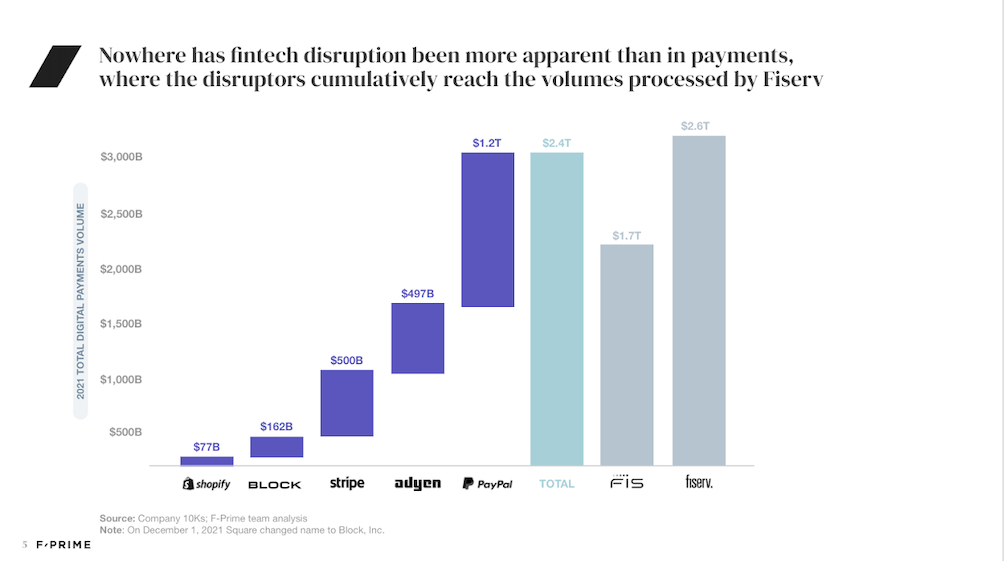
Sponsored By: AppSumo
This essay is brought to you by AppSumo, the store for entrepreneurs. We curate essential software deals that every entrepreneur needs to run their business.
For the last decade, Stripe could do no wrong. When the payments technology company—used by companies such as Amazon, Instacart, and Shopify—launched in 2010, it revolutionized the industry, making it much easier for small companies to accept payments. Entrepreneurs and software developers adored Stripe. Venture capitalists loved the company even more, pouring billions of dollars into the business, which made it, for a time, the most valuable private company in the U.S. at $95 billion.
Within the broader tech industry, buyers have thirsted after Stripe shares on the secondary market, and working at Stripe began to signal the same level of intelligence and future potential that working at Google and eBay had in previous eras. Today, in the midst of a tech recession, many are hoping that Stripe can save the rest of the industry by being the first to go public, thereby opening up the opportunity for other companies to do the same.
But the picture is decidedly less rosy for Stripe than it was, say, two years ago. The company has had its wins—announcing partnerships with Amazon, launching new products, being named a Forrester Wave Leader—but for perhaps the first time in the company’s history, Stripe finds itself in a seemingly unfamiliar scenario: not everything is going its way.
There was the unfortunate public kerfuffle with fellow fintech darling Plaid in May 2022, in which Stripe defended itself against allegations of unscrupulous conduct after it released Financial Connections, a product directly competitive to Plaid’s core offering—after Stripe had offered Plaid to its clients instead of its own product.
Then came reports that mutual funds like Fidelity Investments and T. Rowe Price were marking down their holdings in Stripe by as much as 64%. Stripe has marked down its internal valuation three times since June 2022.
In November 2022, amid a broader tech slowdown, the company laid off 14% of its staff, stating that the company "grew operating costs too quickly." Recent reporting from The Information has revealed that Stripe plans to provide liquidity to employees—some of whom have restricted stock units, or RSUs, that are set to expire 10 years after they were initially issued—by going public through a direct listing or by continuing to raise funds from private investors. The Information’s reporting also uncovered concerns about the company’s financials: slowing revenue growth and a lack of profitability.
Stripe isn’t doomed—but its success is not inevitable. Nor will it be the only winner in the payments industry.
Stripe is an innovative company that is facing competition as it moves upmarket and fends off new entrants as the market expands. As Stripe approaches an eventual public offering, it must become more disciplined in its spending, learning to balance investments in long-term growth with near-term profitability. Let’s take a look at where Stripe started from and what it’s up against in 2023 and beyond.
Early innovation
Stripe is famous for catering to developers, an overlooked but increasingly important buyer persona in internet-economy companies, but the company’s real innovation in the early days was making payments more accessible and invisible than other offerings at the time. When Stripe launched in 2010 there were two advantages that made it stand out relative to the competition: it offered a white-label solution and (nearly) instant access to payments acceptance at the exact right time.
The most popular payments product of the 2000s was PayPal. A website using PayPal to accept payments required users—both the buyer and the seller—to have PayPal accounts and complete a transaction on PayPal’s site instead of its own. Many startups in the 2010s were trying to emulate the online experience of marketplaces like Airbnb, where the entire transaction took place on site. Using front-end frameworks like Node and later React made it easier for Stripe to offer a white-label checkout experience without bouncing customers to a third-party site like PayPal.
Around the same time, mobile payment experiences were being refined. The ability to complete transactions within an app without going to the PayPal app—think card-on-file experiences like Uber or in-app purchasing like Instacart—was necessary for startups of the era, when the iPhone and App Store began to flourish. In-app purchases for digital goods were fairly straightforward at the time: you would use iOS’s built-in payments capabilities, but for purchases of items or services in the real world, there was a big gap in payments capabilities. There were companies—a combination of legacy payment processors, one of thousands of Independent Sales Organizations (ISOs, which offer standalone credit card processing services), and/or a few dozen payment gateways (which don’t offer wallet or stored balance functionality)—that merchants could use to set up white-label transactions, but they were difficult to work with.
The conventional path to obtaining a merchant account (i.e., as a retailer or an accountant) in 2010 involved emailing or faxing in paperwork to an ISO, waiting days or weeks for that information to be reviewed by a processor, and going through a cumbersome process to register that merchant account with a separate payment gateway. Stripe did all of that in minutes—an immeasurably better experience than the competition, even if, in the early days, its founders were doing everything manually behind the scenes.
Increasing competition
Today, Stripe is competing against other modern payments companies, well-funded upstarts, and formidable incumbents that offer much of the same functionality as Stripe. The payments landscape in the U.S. can be split into two categories:
Legacy payment processors
- Chase Merchant Services
- First Data by Fiserv
- Worldpay from FIS
- Global Payments
Modern payment processors
- Adyen
- Stripe
- Braintree
- Checkout.com
For the last decade, modern payment providers like Adyen and Stripe have, for the most part, been eating the legacy providers’ lunch—especially when it comes to winning the business of up-and-coming companies. For reasons similar to what I explained above, the modern providers’ products were better suited for digitally native applications and were easier to use than the incumbents’. During the pandemic, not only did the modern processors, which have a higher concentration of e-commerce payments volume, do well; their more flexible technology was a key asset to brick-and-mortar merchants that suddenly found themselves accepting payments across multiple channels: in-person, in-app, and online.
The legacy processors responded mostly by buying other payments companies to boost their total payments volume (TPV), culminating in a handful of mega-mergers in 2019. Today, despite the pandemic-fueled growth of modern players, legacy players still control the bulk of the market and are growing trillions of dollars worth of TPV ~9% year over year. But modern players are growing hundreds of billions of dollars of TPV ~60% year over year, so it’s not hard to imagine the relative market share between the two categories flipping over the next decade.
The Only Subscription
You Need to
Stay at the
Edge of AI
The essential toolkit for those shaping the future
"This might be the best value you
can get from an AI subscription."
- Jay S.
Join 100,000+ leaders, builders, and innovators

Email address
Already have an account? Sign in
What is included in a subscription?
Daily insights from AI pioneers + early access to powerful AI tools







Comments
Don't have an account? Sign up!